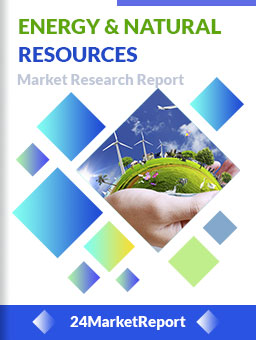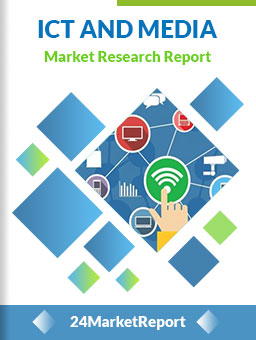
Download FREE Report Sample
Download Free sampleMARKET INSIGHTS
Global oil and gas wastewater treatment services market was valued at USD 5.22 billion in 2023 and is projected to grow from USD 5.52 billion in 2024 to USD 7.21 billion by 2030, exhibiting a compound annual growth rate (CAGR) of 5.2% during the forecast period.
Oil and gas wastewater treatment services encompass specialized solutions designed to treat produced water, flowback water, and other hydrocarbon-contaminated effluents generated during upstream, midstream, and downstream operations. These services employ physical processes (filtration, sedimentation), chemical treatments (coagulation, oxidation), and biological methods (activated sludge, bioreactors) to remove contaminants like hydrocarbons, heavy metals, and dissolved solids, ensuring compliance with environmental regulations.
The market growth is driven by stringent environmental policies, particularly in North America and Europe, coupled with increasing shale gas exploration activities. However, high operational costs and technical complexities in treating high-salinity produced water pose challenges. Key players like Veolia and Suez are investing in advanced membrane technologies and zero-liquid discharge systems to address these challenges while expanding their service portfolios.
Stringent Environmental Regulations Driving Adoption of Treatment Services
Governments worldwide are implementing increasingly strict environmental policies regarding wastewater discharge from oil and gas operations. Many countries now mandate zero liquid discharge (ZLD) policies, forcing energy companies to invest in advanced treatment solutions. In North America alone, over 75% of new oilfield projects now incorporate ZLD systems, creating significant demand for treatment services. The growing emphasis on sustainable water management in hydrocarbon production is transforming wastewater treatment from an optional process to an operational necessity across the industry.
Shale Boom and Produced Water Volumes Creating Market Growth
To know more about market statistics, Download a FREE Sample copy
The rapid expansion of unconventional shale gas and tight oil production has dramatically increased volumes of produced water requiring treatment. Hydraulic fracturing operations generate between 1.5-2 million gallons of wastewater per well, with the U.S. alone producing over 21 billion barrels annually. This surge has created critical demand for cost-effective treatment solutions, particularly in regions like the Permian Basin where water scarcity issues compound operational challenges. Leading service providers are developing mobile treatment units and modular systems specifically designed for shale operations.
➤ For instance, one major operator in the Eagle Ford shale reported reducing freshwater usage by 30% through advanced wastewater recycling systems, demonstrating the economic and operational benefits driving adoption.
Moreover, the rising focus on circular water economy models in oilfield operations is prompting operators to view wastewater as a resource rather than waste, further accelerating market growth.
High Capital and Operational Costs Present Significant Barriers
While demand grows, substantial investment requirements continue to challenge market penetration. Advanced treatment systems for oilfield wastewater often require $2-5 million in initial capital expenditure per installation, with operating costs adding $0.50-$2.00 per barrel treated. These expenses are particularly prohibitive for smaller operators and in regions with lower crude oil prices. The specialized equipment and chemicals needed for effective treatment of hydrocarbons, heavy metals, and dissolved solids contribute significantly to these cost structures.
Other Operational Challenges
Variable Wastewater Composition
The highly variable nature of produced water chemistry across different basins and well types makes standardized treatment difficult. Operators must frequently adjust treatment protocols, increasing complexity and costs while reducing system efficiency.
Remote Location Logistics
Many oil and gas operations occur in areas with limited infrastructure, requiring either costly transportation of wastewater to treatment facilities or deployment of less efficient mobile treatment units.
Oil Price Volatility Impacts Treatment Service Adoption
The cyclic nature of the energy industry creates financial uncertainty that restrains wastewater treatment investments. During periods of low oil prices, operators frequently defer non-essential spending, with environmental initiatives often among the first budget items cut. Historical data shows a strong correlation between WTI crude prices above $70/bbl and increased adoption of advanced treatment technologies. This price sensitivity particularly affects discretionary water recycling projects, despite their long-term operational benefits.
Additionally, the multi-year payback period for many treatment systems makes them vulnerable to cancellation during market downturns, slowing overall market growth during volatile periods in the energy sector.
Technological Innovations Opening New Treatment Paradigms
Emerging technologies in membrane filtration, advanced oxidation, and electrocoagulation are creating significant opportunities in the sector. Recent breakthroughs in graphene oxide membranes have demonstrated 95% salt rejection rates at half the energy consumption of conventional reverse osmosis systems. Similarly, new electrochemical treatment methods are showing promise for removing difficult contaminants like boron and selenium at lower costs. These innovations are enabling service providers to offer more efficient and cost-effective solutions.
Growing Focus on Water Reuse Presents Expansion Potential
Water scarcity concerns are driving interest in high-level recycling of produced water for hydraulic fracturing and other oilfield applications. Some operators now report recycling over 80% of their wastewater, realizing both environmental benefits and significant cost savings. This shift toward closed-loop water systems represents a major growth avenue for treatment service providers capable of delivering reliable, high-volume treatment solutions.
➤ A recent industry survey found that over 60% of operators now consider water recycling capabilities when selecting treatment providers, compared to just 35% five years ago.
Furthermore, the potential crossover application of oilfield wastewater treatment technologies for industrial and municipal water treatment presents additional market expansion opportunities for service providers.
Designing and Engineering Consulting Segment Dominates Due to Rising Demand for Customized Wastewater Solutions
The market is segmented based on type into:
Designing and Engineering Consulting
Building and Installation
Operations
Maintenance
Others
Mining Segment Leads Due to High Wastewater Generation in Extraction Activities
The market is segmented based on application into:
Mining
Processing
Transportation
Membrane Filtration Gaining Traction for Efficient Removal of Contaminants
The market is segmented based on technology into:
Membrane Filtration
Biological Treatment
Physical Treatment
Chemical Treatment
Sludge Treatment
Market Leaders Expand Infrastructure and Technological Capabilities to Maintain Dominance
The global oil and gas wastewater treatment services market has a diversified competitive landscape, with established multinational corporations holding significant market share while regional players compete through specialized solutions. Veolia Group and Suez collectively dominate the industry, accounting for nearly 30% of global revenue in 2023. Their leadership stems from comprehensive service portfolios encompassing treatment technologies, consultancy, and full-cycle water management solutions tailored for upstream, midstream, and downstream oil operations.
Ecolab and Xylem Inc. represent other major forces in the sector, with particularly strong footholds in North American shale operations and Middle Eastern oilfields. These companies have been actively expanding their membrane filtration and advanced oxidation treatment capabilities to address increasingly stringent environmental regulations across production regions.
Meanwhile, technology-focused firms like Aquatech International and Arvia Technology are gaining traction through innovative approaches including zero liquid discharge (ZLD) systems and electrochemical treatment solutions. Their growth reflects the industry's shift toward more sustainable water management practices as operators seek to minimize environmental impact while optimizing water reuse.
The market also features numerous regional specialists such as India's Thermax Limited and Canada's WOG Technologies, which combine localized operational expertise with cost-effective treatment solutions. These players are increasingly forming strategic partnerships with global leaders to enhance their technological offerings and expand into new geographic markets.
Veolia Group (France)
Suez (France)
Xylem Inc. (U.S.)
Ecolab (U.S.)
Thermax Limited (India)
Pentair (U.K.)
WOG Technologies (Canada)
Golder Associates (Canada)
SWA Water Treatment (Australia)
AnoxKaldnes (Norway)
Aquatech International (U.S.)
Arvia Technology (U.K.)
The global oil and gas industry is witnessing a significant shift toward Zero Liquid Discharge (ZLD) wastewater treatment systems, driven by stringent environmental regulations and sustainability goals. ZLD technologies, which recover over 95% of wastewater for reuse while minimizing liquid waste discharge, are gaining traction as operators face increasing pressure to reduce freshwater consumption. Recent data indicates that the adoption rate of ZLD in shale gas operations has grown by approximately 12% annually since 2020, with North America leading this transition. Advanced membrane distillation and crystallization techniques are now being combined with traditional reverse osmosis to achieve higher recovery rates.
Decentralized Treatment Solutions
While large-scale treatment plants dominate the market, modular and mobile treatment units are emerging as cost-effective alternatives for remote oilfields. These systems can treat produced water on-site with 30-40% lower operational costs compared to centralized facilities. The flexibility of containerized units allows operators to adjust capacity based on production fluctuations, particularly beneficial for unconventional resource plays where well output varies significantly over time.
The integration of IoT-enabled sensors and AI analytics is revolutionizing wastewater management in oil and gas operations. Real-time monitoring of parameters like total dissolved solids (TDS), oil content, and chemical oxygen demand (COD) allows for predictive maintenance and optimized treatment processes. Leading service providers report that digital solutions can reduce treatment costs by up to 25% while improving compliance rates. Furthermore, blockchain applications are being piloted to create immutable records of water treatment and disposal, addressing transparency concerns in regulatory reporting.
Beyond wastewater treatment, the industry is increasingly viewing produced water as a potential resource rather than waste. Advanced treatment systems now enable the recovery of valuable elements like lithium, bromine, and rare earth metals from oilfield brines. Pilot projects in the Permian Basin have demonstrated lithium extraction efficiencies exceeding 90%, creating new revenue streams while addressing critical mineral shortages. This trend aligns with circular economy principles and helps operators offset treatment costs through byproduct sales.
North America
The North American market, led by the U.S. and Canada, is a mature yet growing segment due to stringent environmental regulations and rising shale gas production. The U.S. EPA’s effluent guidelines for oil and gas extraction (40 CFR Part 435) mandate advanced treatment solutions, pushing operators to adopt technologies like membrane filtration and electrocoagulation. The Permian Basin’s increasing output has intensified wastewater volumes, demanding scalable treatment solutions. While the U.S. dominates with a focus on technological innovation, Canada’s oil sands operations require specialized services for high-TDS (total dissolved solids) wastewater. However, high operational costs and permitting delays pose challenges, particularly for smaller operators.
Europe
Europe’s market thrives on strict EU directives, including the Water Framework Directive, which enforces zero-discharge policies for offshore operations. Countries like Norway and the UK, with extensive offshore drilling activities, prioritize advanced treatment systems such as biological nutrient removal and reverse osmosis. The region also emphasizes circular economy practices, with companies like Veolia and Suez offering water reuse solutions for hydraulic fracturing. However, declining North Sea production and high compliance costs limit growth potential. Eastern Europe lags due to weaker enforcement but could see opportunities as EU sustainability targets tighten.
Asia-Pacific
China and India dominate this region, driven by rapid industrialization and coalbed methane (CBM) development. China’s “Zero Liquid Discharge” (ZLD) policies mandate rigorous treatment, favoring technologies like evaporators and crystallizers. India’s downstream sector, supported by government initiatives like the Clean Ganga Mission, is adopting decentralized treatment units. Southeast Asia faces challenges with underdeveloped infrastructure, though emerging LNG projects in Indonesia and Malaysia are spurring demand. Cost sensitivity often sidelines advanced solutions, but tightening regulations and foreign investments are gradually shifting the landscape toward sustainable practices.
South America
Brazil’s pre-salt oil fields and Argentina’s Vaca Muerta shale play are key growth drivers, but political and economic instability dampens large-scale investments. Petrobras’ initiatives to reuse produced water highlight progress, yet infrastructure gaps persist. Local service providers face competition from global players like Ecolab, particularly in chemical treatment segments. Chile and Colombia are exploring regulatory reforms to attract private investments, though progress remains slow. The lack of consistent enforcement remains a hurdle, with many operators relying on basic settling ponds rather than advanced systems.
Middle East & Africa
The Gulf Cooperation Council (GCC) nations, led by Saudi Arabia and the UAE, invest heavily in water reuse for enhanced oil recovery (EOR), leveraging large-scale desalination and tertiary treatment. Saudi Aramco’s Jafurah Basin development will significantly boost demand for tailored wastewater solutions. Africa presents a mixed picture: Nigeria and Angola struggle with outdated infrastructure, while North African countries like Algeria prioritize partnerships with global firms for technological upgrades. Funding limitations and geopolitical risks slow progress, but the region’s untapped reserves ensure long-term potential.
This market research report offers a holistic overview of global and regional markets for the forecast period 2025–2032. It presents accurate and actionable insights based on a blend of primary and secondary research.
✅ Market Overview
Global and regional market size (historical & forecast)
Growth trends and value/volume projections
✅ Segmentation Analysis
By product type or category
By application or usage area
By end-user industry
By distribution channel (if applicable)
✅ Regional Insights
North America, Europe, Asia-Pacific, Latin America, Middle East & Africa
Country-level data for key markets
✅ Competitive Landscape
Company profiles and market share analysis
Key strategies: M&A, partnerships, expansions
Product portfolio and pricing strategies
✅ Technology & Innovation
Emerging technologies and R&D trends
Automation, digitalization, sustainability initiatives
Impact of AI, IoT, or other disruptors (where applicable)
✅ Market Dynamics
Key drivers supporting market growth
Restraints and potential risk factors
Supply chain trends and challenges
✅ Opportunities & Recommendations
High-growth segments
Investment hotspots
Strategic suggestions for stakeholders
✅ Stakeholder Insights
Target audience includes manufacturers, suppliers, distributors, investors, regulators, and policymakers
-> Key players include Veolia Group, Xylem, Suez, Ecolab, Thermax Limited, Pentair, WOG Technologies, Golder Associates, SWA Water Treatment, AnoxKaldnes, Paques, Arvia Technology, and Aquatech.
-> Key growth drivers include stringent environmental regulations, increasing oil & gas production, and rising demand for water reuse in operations.
-> North America currently leads the market due to shale gas activities, while Middle East & Africa is projected as high-growth region.
-> Emerging trends include membrane filtration technologies, zero liquid discharge systems, and AI-powered treatment optimization.

Speak to our Custom Research Team and get the Custom Research in a budget
Custom ResearchFrequently Asked Questions ?
A license granted to one user. Rules or conditions might be applied for e.g. the use of electric files (PDFs) or printings, depending on product.
A license granted to multiple users.
A license granted to a single business site/establishment.
A license granted to all employees within organisation access to the product.
Upto Working 24 to 48 hrs
Upto 72 hrs max - Weekends and Public Holidays
Online Payments with PayPal and CCavenue
Wire Transfer/Bank Transfer
Hard Copy




 Industry Market Size
Industry Market Size SWOT Analysis
SWOT Analysis Industry Major Players
Industry Major Players Revenue Forecasts
Revenue Forecasts Historical and Forecast Growth
Historical and Forecast Growth Profitability Analysis
Profitability Analysis
























